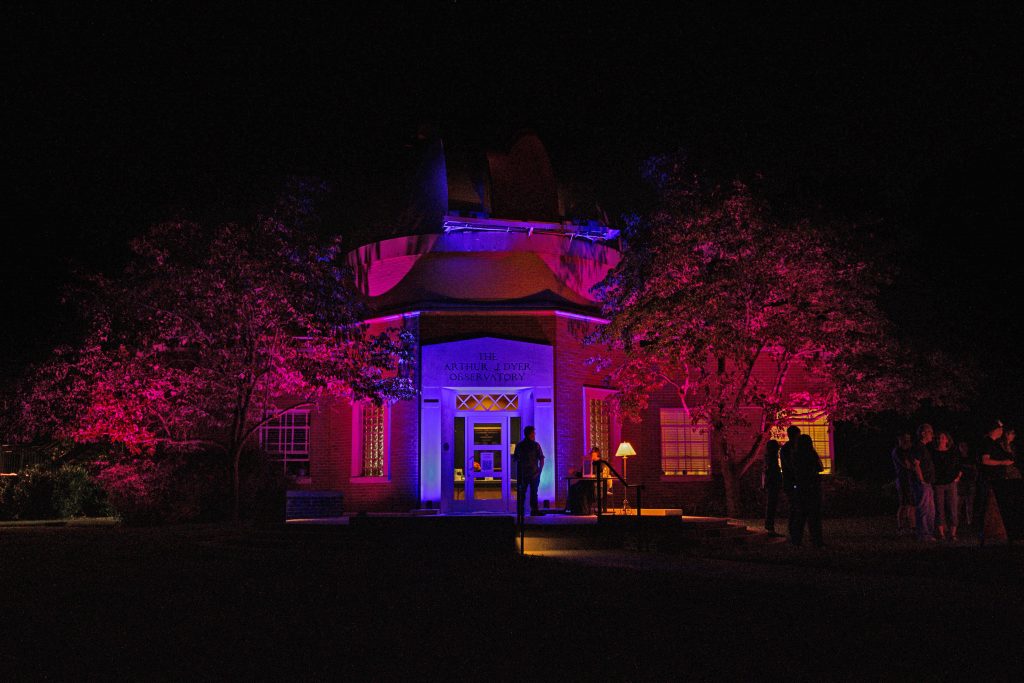
One of the highlights each month at Dyer Observatory is Telescope Night. During these events, visitors come to one of two hour-long sessions to get firsthand views of some of the wonders of the cosmos, check out unique and interactive exhibits, and converse with staff and volunteers about all things astronomy. On Friday, June 20, the skies cleared to give staff and visitors alike a great night full of fun.
The Sky is the Limit
As the name suggests, the real stars of Telescope Nights are the observatory telescopes and the objects they focus on. Depending on factors such as weather conditions, what is visible, and how many telescope operators are available, there may be as many as half a dozen telescopes locked in on different targets. The Moon and planets are definitely favorites, but they aren’t always available. During the summer of 2025, the only planet visible in the evening sky is Mars. As the chasm between us and the Red Planet continually widens as we make our way around the Sun, Mars has shrunken so much that even Dyer’s powerful Seyfert Telescope shows a tiny, almost featureless orb. As such, the telescopes on June 20 were trained on a quadruplet of stars in Lyra known colloquially as the “Double Double,” the remains of a small, dead star known as the Cat’s Eye Nebula, and a massive cluster of 300,000 stars known as the “Great Cluster of Hercules” or “M13,” that is bright enough to be spotted by eye on a dark summer night.
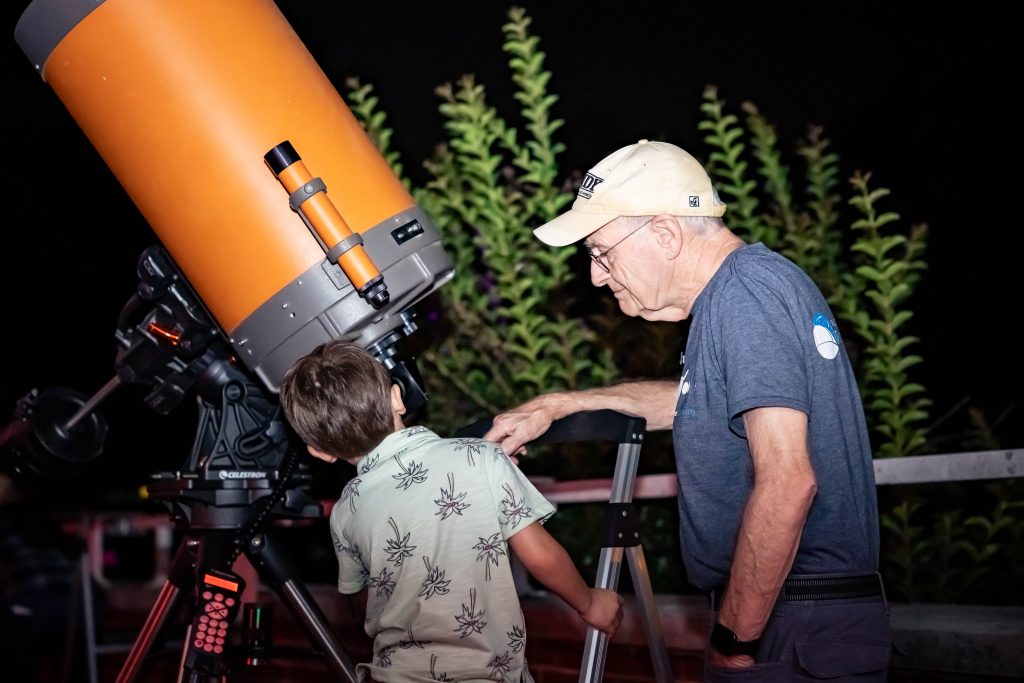
As observers patiently waited for their chance to view through an eyepiece, observatory director Dr. Billy Teets also gave impromptu sky tours to highlight constellations overhead. Using a moderately powerful green laser whose beam resembled a ridiculously long light saber, it appeared he was actually touching the constellations and objects being observed. On nights like this, it is also common to see satellites passing overhead, which sometimes include a bright pass by the International Space Station. With a bit of luck, vigilant observers are sometimes even treated every now and then to a meteor, better known as a “shooting star.”
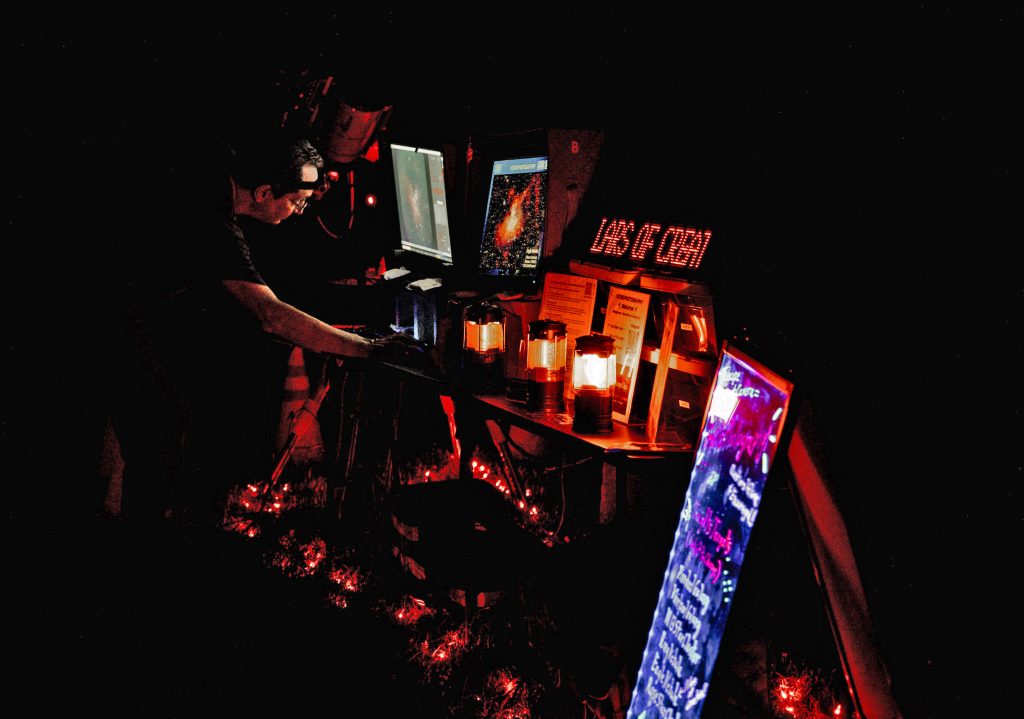
Lots to See and Do, Even with Clouds
Dyer Observatory’s Telescope Nights are only cancelled in the event that severe weather may pose a safety hazard—we don’t let clouds or even rain stand in the way of us sharing the cosmos with those far and wide. The interior of the observatory is loaded with unique exhibits, many of which are interactive, and staff and volunteers are stationed around to give visitors a more in-depth tour of the exhibits and answer questions to ensure that anyone coming through our front door gets a maximum level of engagement. Ever wonder how astronomers determine the temperatures and compositions of stars? The spectroscopy installation in the observatory library provides a dazzling demonstration using special lamps. How has Vanderbilt University been involved in astronomy over the years? The front lobby display case features many of the unique instruments first used 150 years ago by Vanderbilt faculty and students in their pursuit of knowledge. The observatory residence also houses Vanderbilt’s original 6″ telescope. Our volunteers are extremely dedicated to educational outreach, with some even bringing their own elaborate setups.
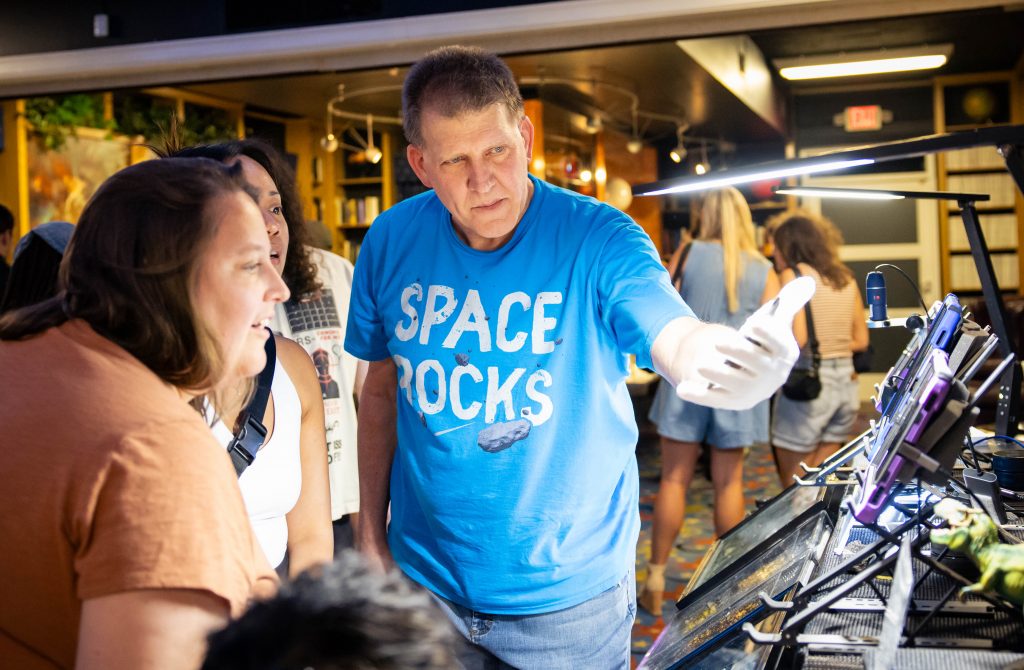
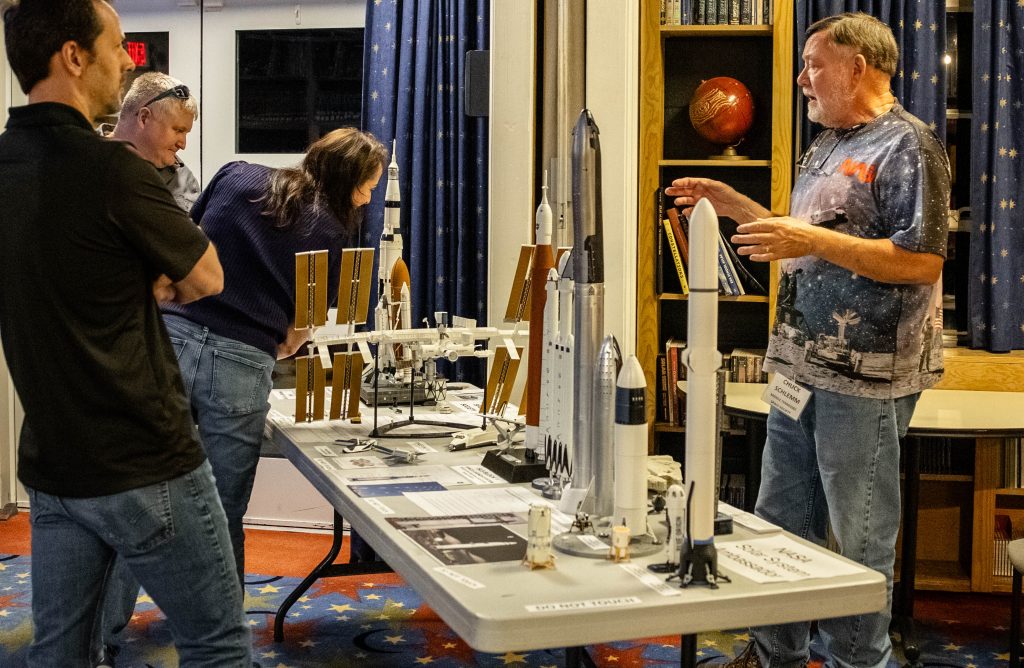
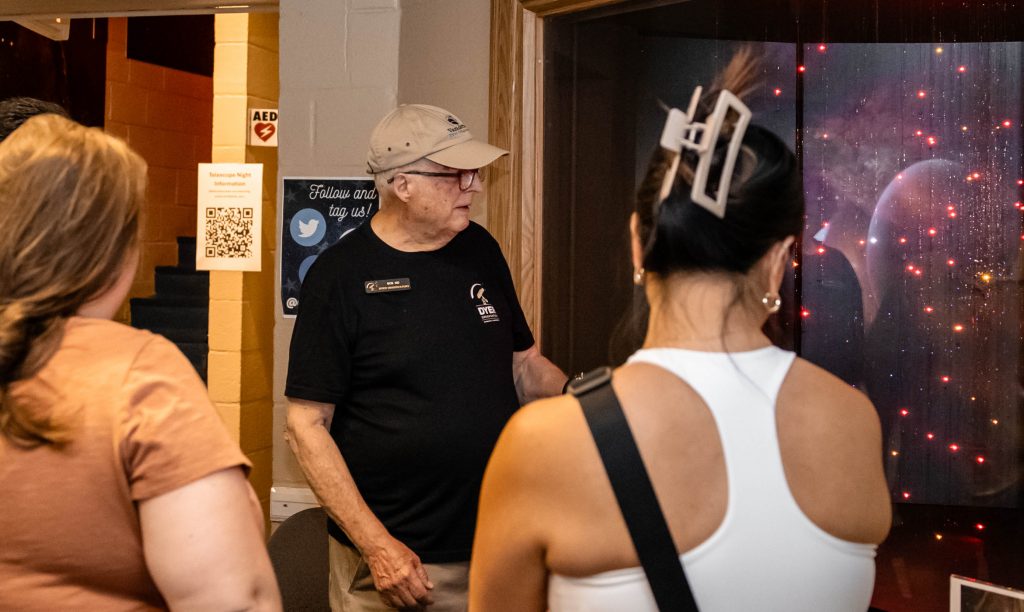
In short, Dyer Observatory’s Telescope Nights are one of the signature events that staff and visitors regularly look forward to. There is so much to do and lots to see. With the changing skies, visitors are often treated to new views through the telescopes each month (when the clouds don’t have other plans for us), and even repeat visitors learn a little more or see something new with each trip up to our hilltop. While we are currently only holding Telescope Nights once a month, be sure to follow us on Eventbrite to receive notifications of when additional events, including lectures, concerts, and special viewing nights, are added to our calendar. We look forward to seeing you next time!